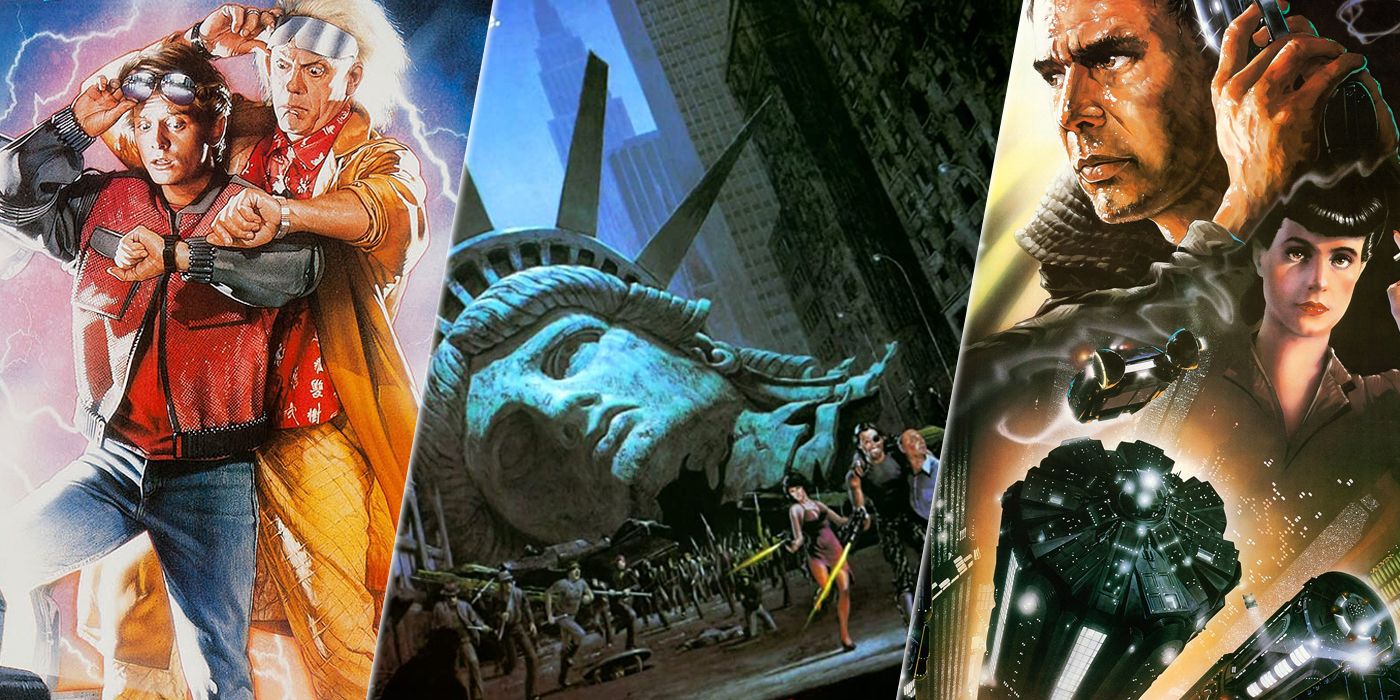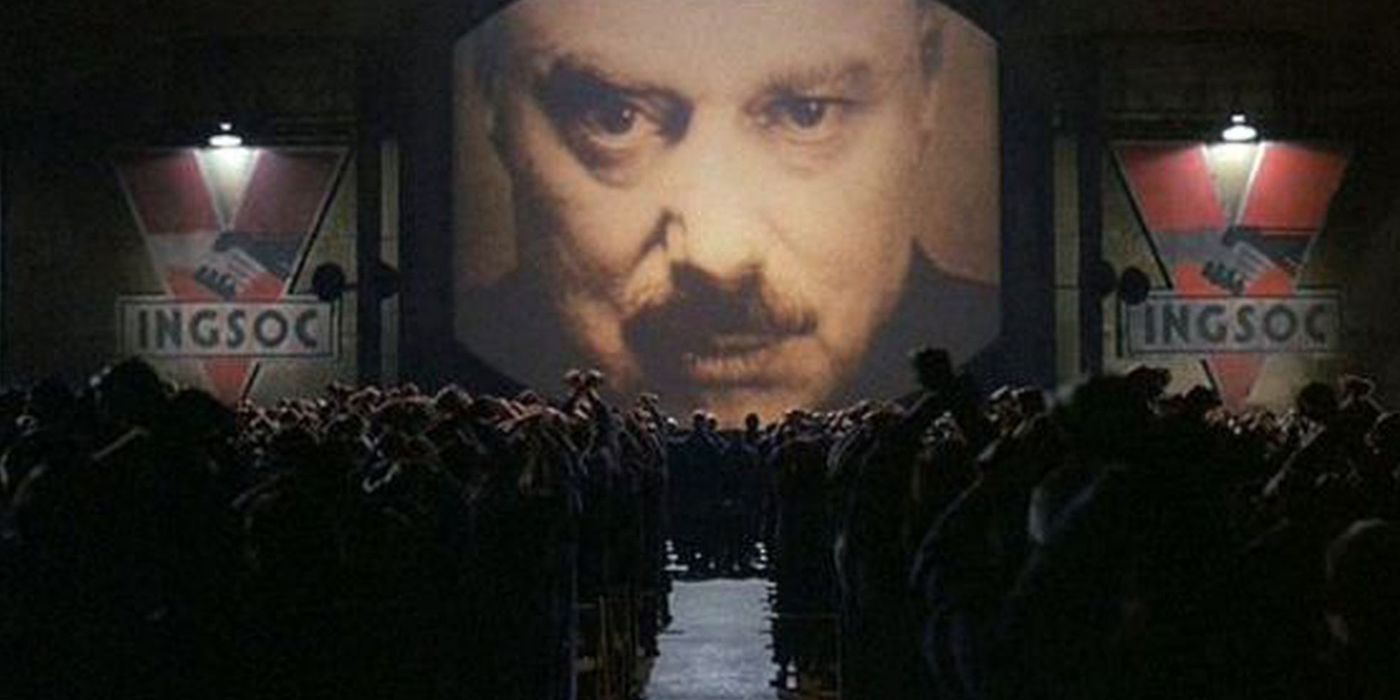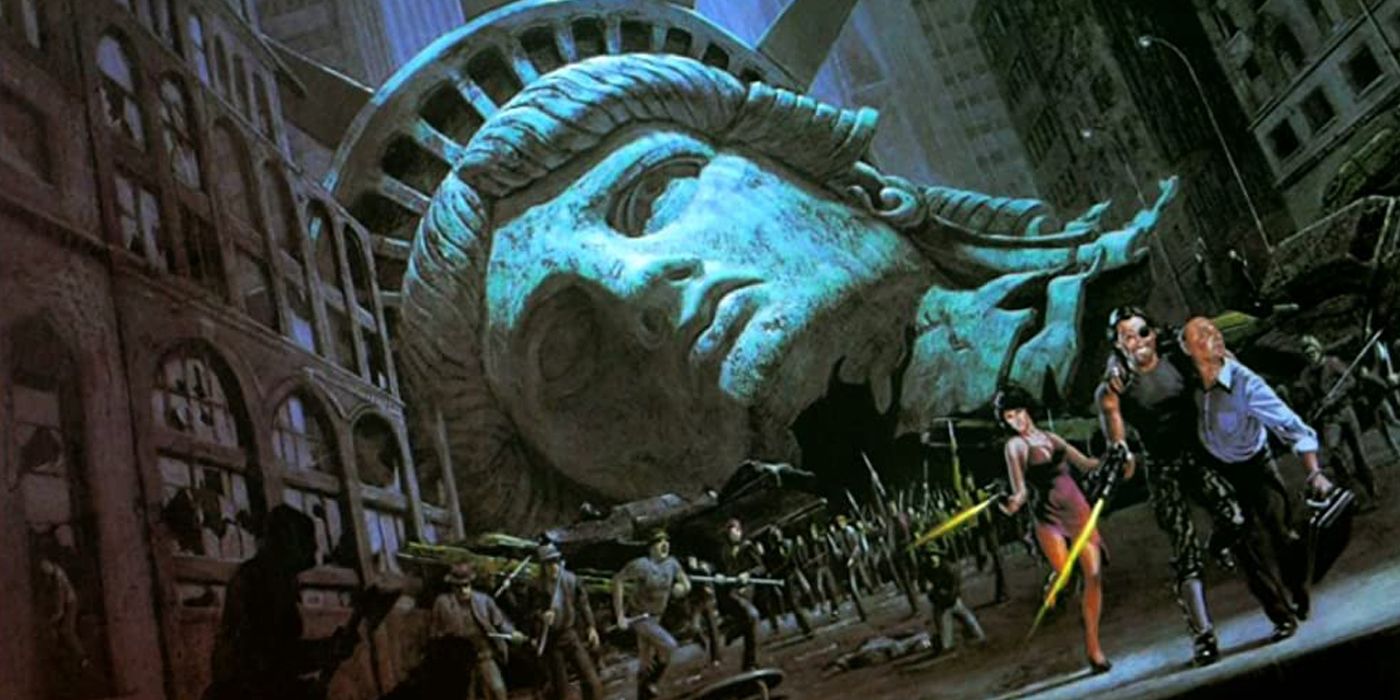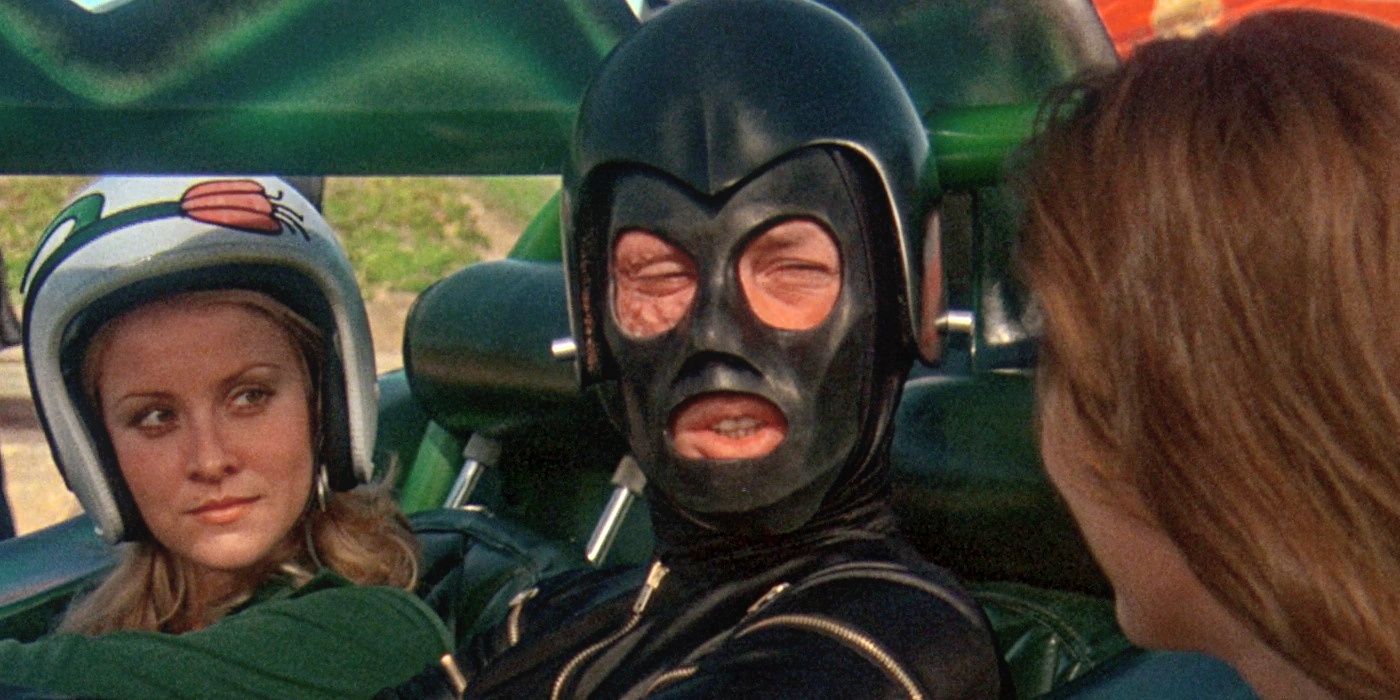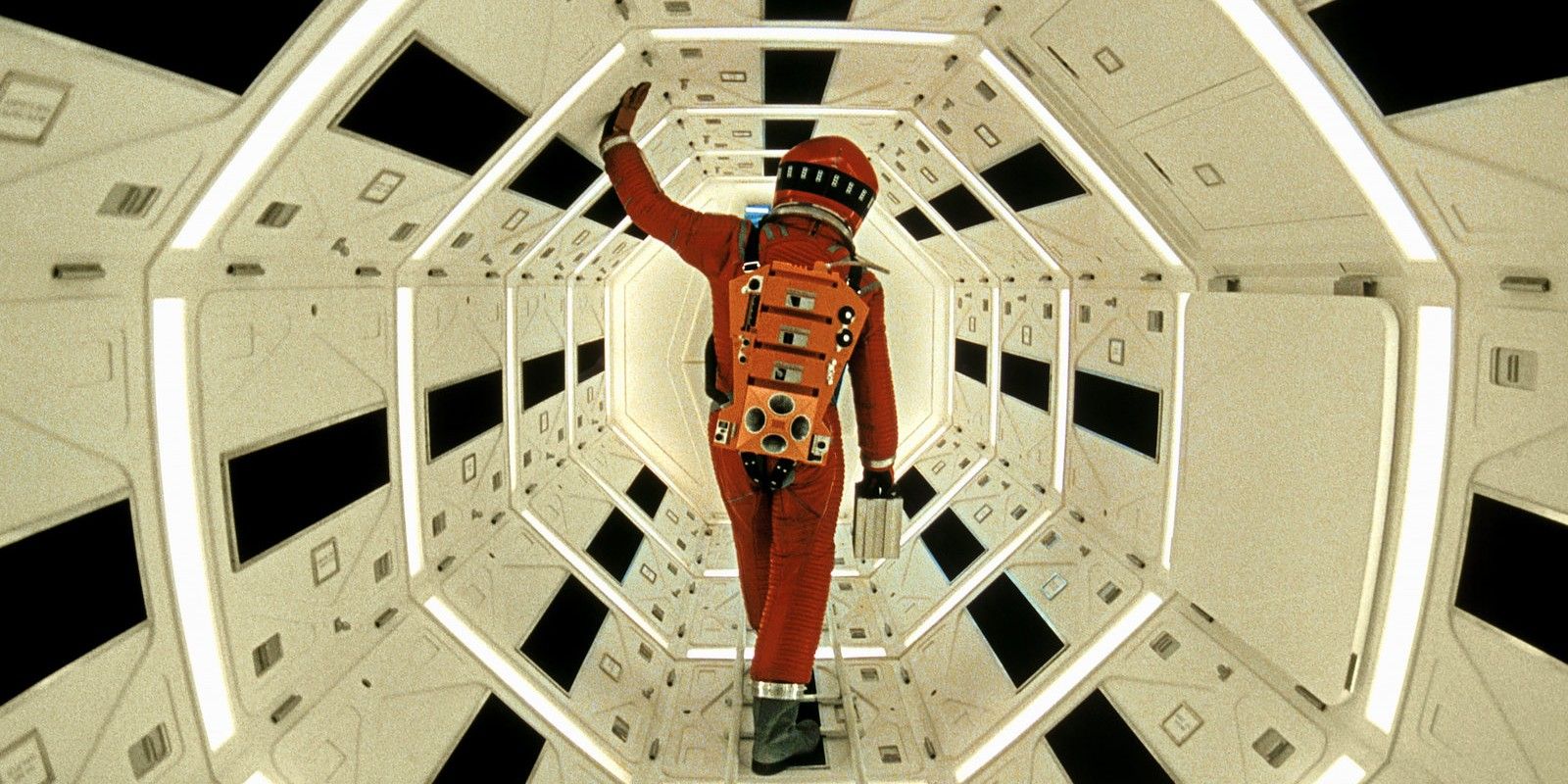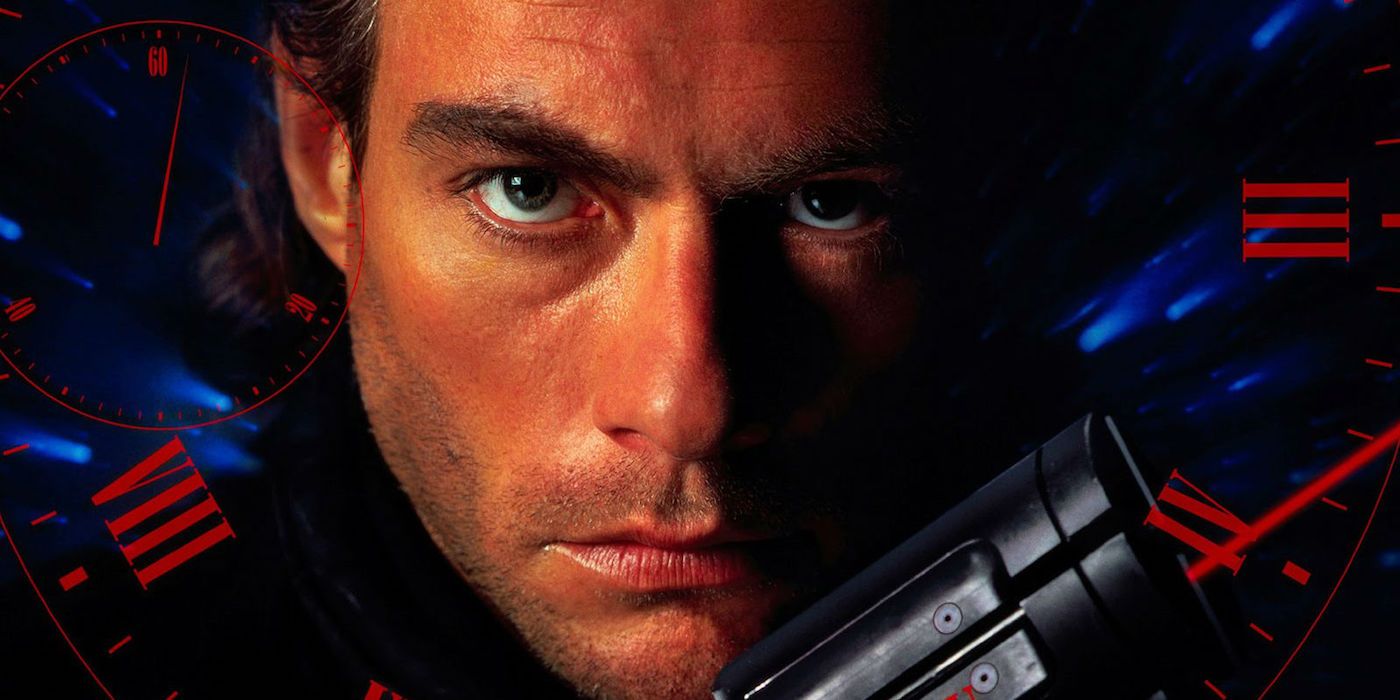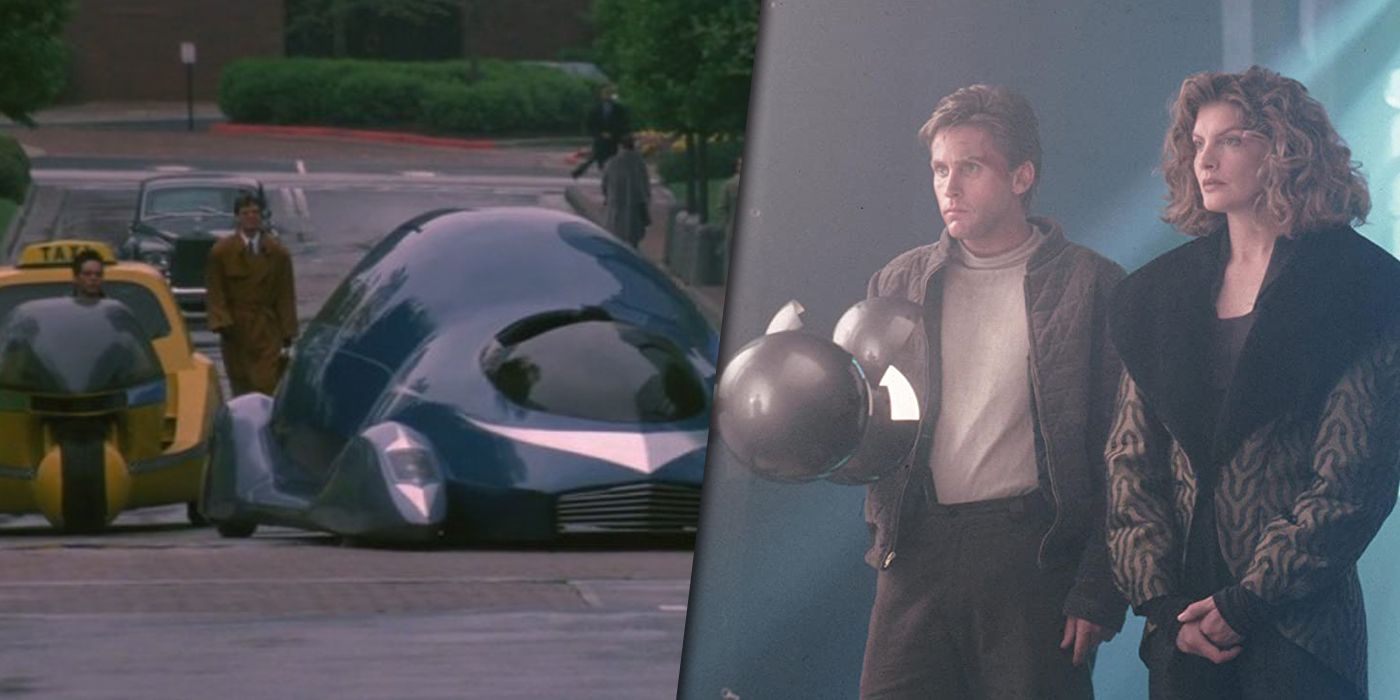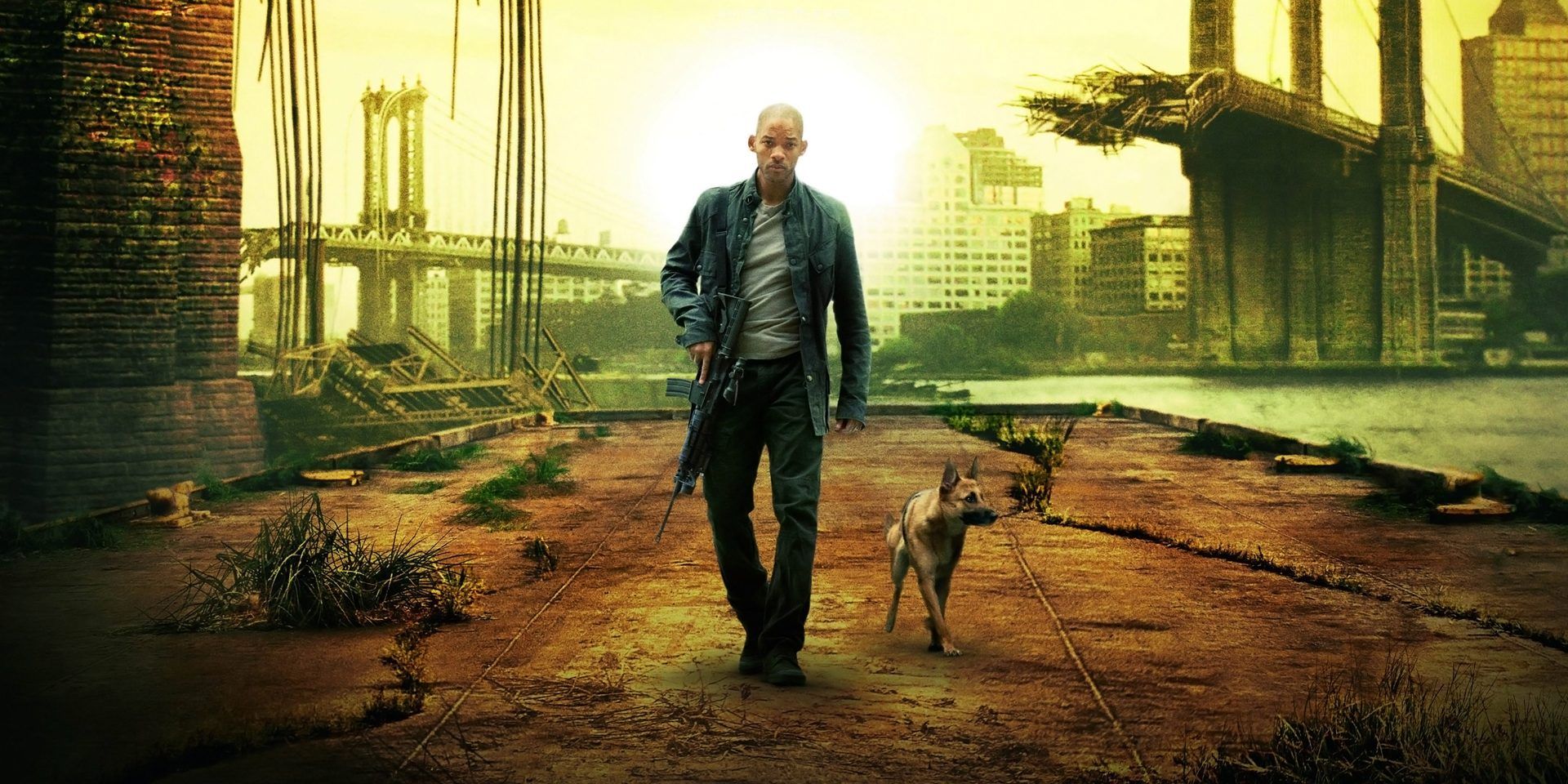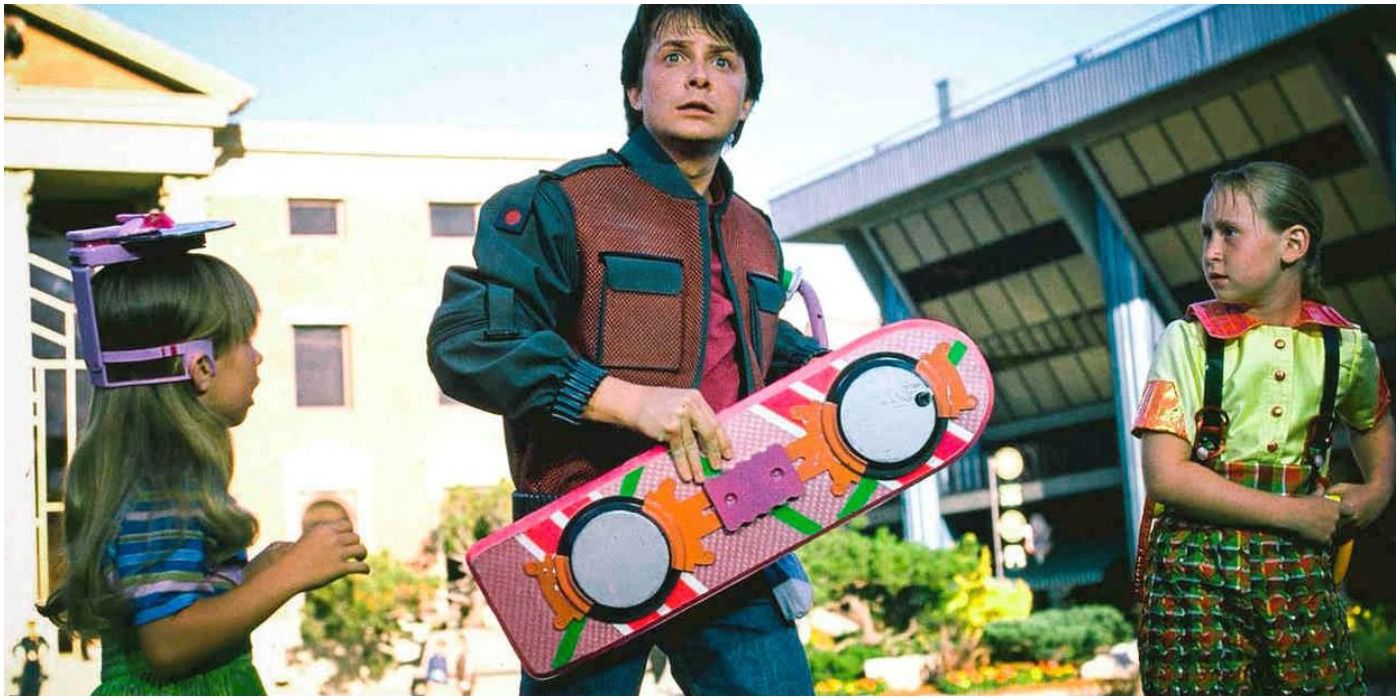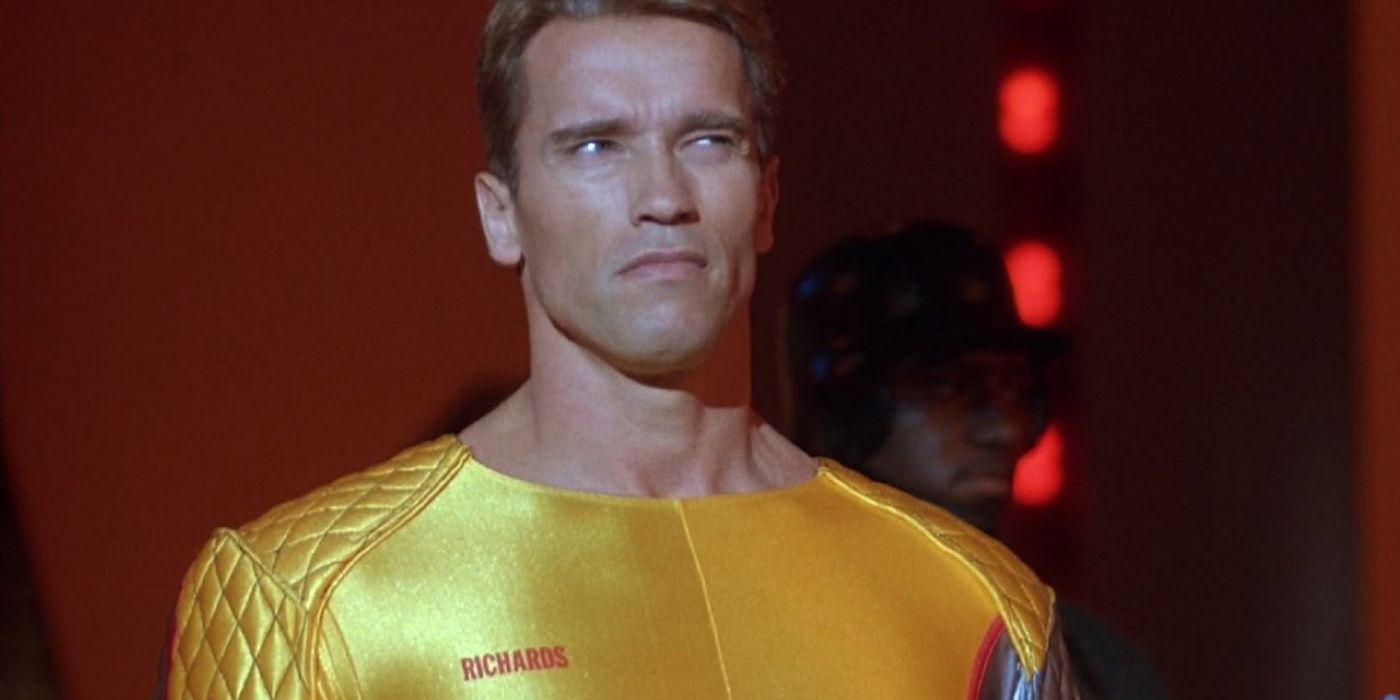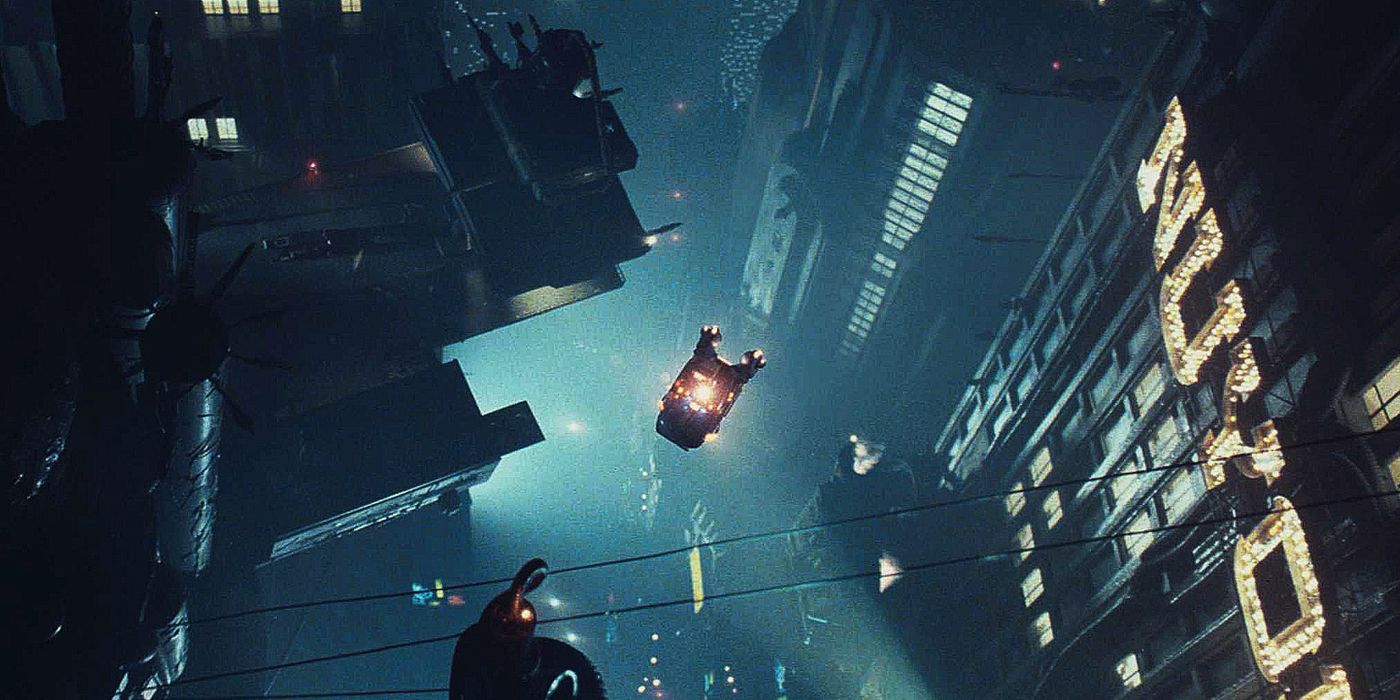While Hollywood and sci-fi movies in particular love to explore humanity's possible future in a number of ways that range from advanced societies to post-apocalyptic, there is the risk of getting too specific with the time period when dealing with stories set in the near future given the longevity of some popular movies.
The use of vague references like "in the near future" helps keep a "futuristic" movie from becoming dated over the years, though there have been a few excellent examples of movies set in the future that used a specific date that has now passed. While some of these movies came pretty close in their predictions of the future others were way off, which we'll be taking a closer look at today.
10 1984 Imagined A Dystopic Totalitarian Society Oppressed By The Governmental Big Brother
George Orwell wrote Nineteen Eighty-Four in 1949, which predicted a totalitarian super-state known as Airstrip One that formed after a global war and subsequent revolution that led to an oppressive government that ruled over its forcibly conformed citizens with Thought Police and the all-seeing eye of the government's representative, Big Brother.
The cinematic 1984 was released in 1984 as well which highlighted some of the extreme differences in the times, though fans of the novel and movie today can see more than a few frightening similarities to the increased surveillance our society currently lives under.
9 Manhattan Became A Lawless Prison Island By 1997 In Escape From New York
Kurt Russell starred as the iconic Snake Plissken in 1981's Escape From New York, a former Special Forces WWIII war hero who turned against his government and was imprisoned and forced to serve as an operative for his former commander.
The movie takes place in 1997 in a dystopic take on the USA where the crime rate has risen over 400% leading to the entire island of Manhattan being cordoned off and turned into a maximum-security prison zone. There are some examples of futuristic tech like personal trackers and implanted explosives, though some of Plissken's tech dates the movie quite a bit.
8 Death Race 2000 Featured A Dystopic World Controlled By Violent Entertainment
Roger Corman's Death Race 2000 took place in a dystopian society that developed after global economic ruin led to a totalitarian rule in the United States that controlled the population through entertainment created by the violent and bloody Transcontinental Road Race.
The race was filled with costumed drivers like the popular masked Frankenstein and tricked-out themed cars in a dark and gory exploration of society's need for entertainment that was rebooted in 2008 with Death Race which featured a similar dystopian society and race that took place only four years later in 2012.
7 2001: A Space Odyssey Was Ahead Of The Curve But Still Scientifically Accurate
Stanley Kubrick's visual masterpiece 2001: A Space Odyssey first hit theaters in 1968's and charts the evolution of the space age, from the dawn of man to our early exploration of the solar system that included an ill-fated manned mission to Jupiter.
While 2001: A Space Odyssey imagined a scientifically accurate look at a future space-traveling society, it was years ahead of what we are currently capable of, which was highlighted even further by the less-revered sequel, 2010: The Year We Make Contact.
6 Timecop Featured Advanced Cars And A Time-Traveling Police Organization In 2004
1994's Timecop starring Jean-Claude Van Damme took place in both 1994 and a decade later in 2004, where technology seemed to took a massive leap forward in only a few odd areas of industry, including time travel and automobiles.
An organization forms to police time travel after it is invented despite that organization being the only place with a known time machine (which might be one of the worst time machines in sci-fi), and the streets are filled with self-driving bulky vehicles that were entirely out of place in the still kind of 90s setting of 2004.
5 2009's Elite Escaped Death By Stealing People From Time To Possess Them In Freejack
1992's Freejack starred Emilio Estevez as a race car driver in 1991 who finds himself transported to the future of 2009 after he's about to die in an accident, only to discover his body has been chosen by an elderly elite (played by Anthony Hopkins) as his new body in a dark twist on immortality.
Not only was time travel technology readily available to mercenaries in 2009, but the streets were filled with futuristic vehicles of the elite, who preyed on humans from the past as drugs and pollution had riddled the future. Freejack featured a dark and frequently ridiculous look at the future that was quite different from the real 2009.
4 I Am Legend Featured A World Ravaged By Disease And Monstrous Darkseekers in 2012
Will Smith starred in 2007's I Am Legend as the apparent sole survivor of a deadly virus that ravaged the Earth, leaving him alone in an overgrown Manhattan in 2012, though the city was also populated by the infected who turned into monstrous and semi-vampiric Darkseekers.
While I Am Legend isn't futuristic in the sense that it featured an advanced society, it did feature a few nods to a possible future that included billboards for a Batman/Superman movie in the post-apocalyptic Times Square that teased an in-development movie that never happened until 2016's Batman v Superman: Dawn of Justice.
3 Back To The Future Part II Traveled To The Flashy And Advanced Future World Of 2015
Robert Zemeckis directed the hit time-traveling Back to the Future trilogy which explored the movie' present day of 1985 as well as the pasts of 1955 and 1885, though 1980's Back to the Future Part II took Marty McFly, his girlfriend Jennifer, and his brilliant friend Doc Brown to the far future of 2015.
The reality of 2015 looked quite a bit different from the one seen in Back to the Future, which included dramatic holographic ads and futuristic clothing as well as flying cars with cold fusion engines and hoverboards, which we are still trying to perfect today.
2 Political Prisoners Were Killed In A Televised Game Show Called The Running Man In 2017
1987's The Running Man took place in the year 2017 in a dystopic Los Angeles that was devastated by civil unrest and largely blocked off to serve as the "stadium" for the titular game show that helps distract the masses from the fascist government. The game show helps the government get rid of troublesome convicts and political prisoners in partnership with a corrupt TV producer.
Arnold Schwarzenegger's presence made this more of an action film than a sci-fi exploration into the future, though it still painted a dark look at a possible police state that touched on society's ongoing interest in gladiatorial games.
1 Artificial Replicants Labored And Fought Wars For Corporations In Blade Runner's 2019
Ridley Scott's beloved sci-fi hit Blade Runner first released in 1982 and introduced a high-tech cyberpunk future world of 2019 that was ruled by powerful organizations like the Tyrell Corporation, who created artificial replicants as a labor and soldier force that began to go rogue.
Harrison Ford starred as Deckard and was known as a Blade Runner who hunted down the rogue replicant operatives in the beautiful city world that was both bright and dingy at the same time and filled with flying cars and "advanced" 80s era computer technology.

